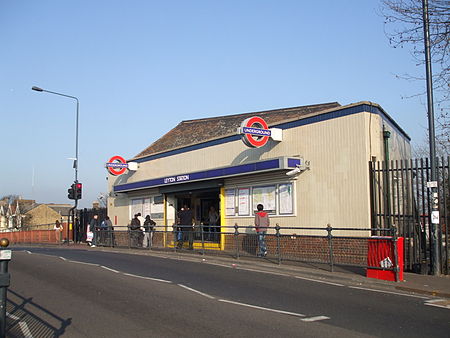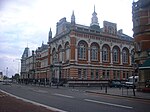Leyton tube station
Central line (London Underground) stationsFormer Great Eastern Railway stationsLeytonLondon Underground Night Tube stationsRail transport stations in London fare zone 3 ... and 3 more
Railway stations in Great Britain opened in 1856Tube stations in the London Borough of Waltham ForestUse British English from August 2012

Leyton is a London Underground station in Leyton, in the London Borough of Waltham Forest, East London. Located on Leyton High Road, adjacent to the A12, the station is on the Central line between two stations assigned to two fare zones – Stratford and Leytonstone. It is in zone 3.
Excerpt from the Wikipedia article Leyton tube station (License: CC BY-SA 3.0, Authors, Images).Leyton tube station
Eastern Avenue, London Leytonstone (London Borough of Waltham Forest)
Geographical coordinates (GPS) Address Nearby Places Show on map
Geographical coordinates (GPS)
| Latitude | Longitude |
|---|---|
| N 51.5566 ° | E -0.0052 ° |
Address
Eastern Avenue
E11 4EE London, Leytonstone (London Borough of Waltham Forest)
England, United Kingdom
Open on Google Maps








